As people around the world get ready to witness the solar eclipse on August 21, some of us might be wondering what’s the best way to watch this celestial event.
In the US, millions of people will be able to see totality, but in the UK and Ireland, the moon will only partially obscure the sun, creating a partial solar eclipse.
According to the The Schepens Eye Research Institute, there is no danger to the eye in looking directly at a total solar eclipse, but looking directly even at the smallest part of a partial eclipse can result in retinal damage.
Here are a few safe ways recommended by Nasa and the Royal Astronomical Society to enjoy this magical (okay, astronomical) moment without putting your eyes at risk.
1. Get a pair of eclipse viewing glasses
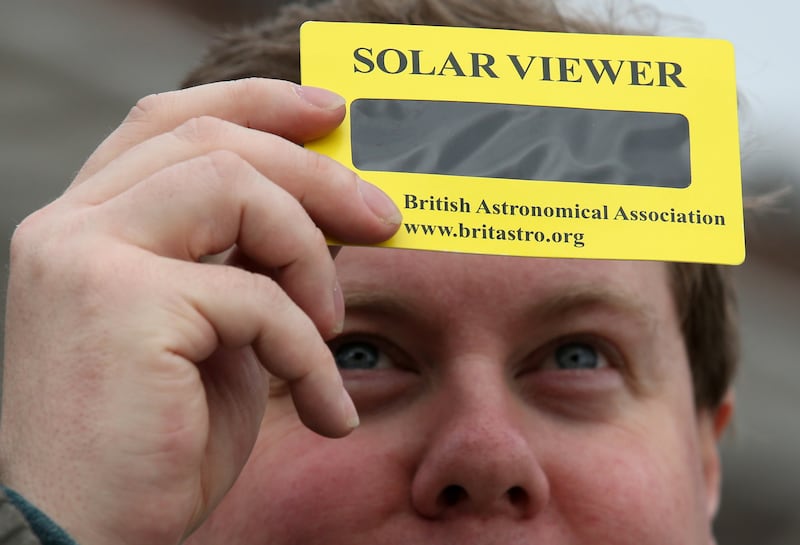
These are the only way of viewing the eclipse directly, other than through a telescope fitted with a professional filter.
Nasa recommends that people wanting to see the event should check the safety authenticity of the viewing glasses to ensure they have certification information with a designated ISO 12312-2 international standard and have the manufacturer’s name and address printed somewhere on the product.
Avoid using glasses that are older than three years, or have scratched or wrinkled lenses.
Similar to 3D glasses, eclipse viewers are made from card and inlaid with a special material that cuts the sun’s light down 100,000 times.
2. Use a mirror
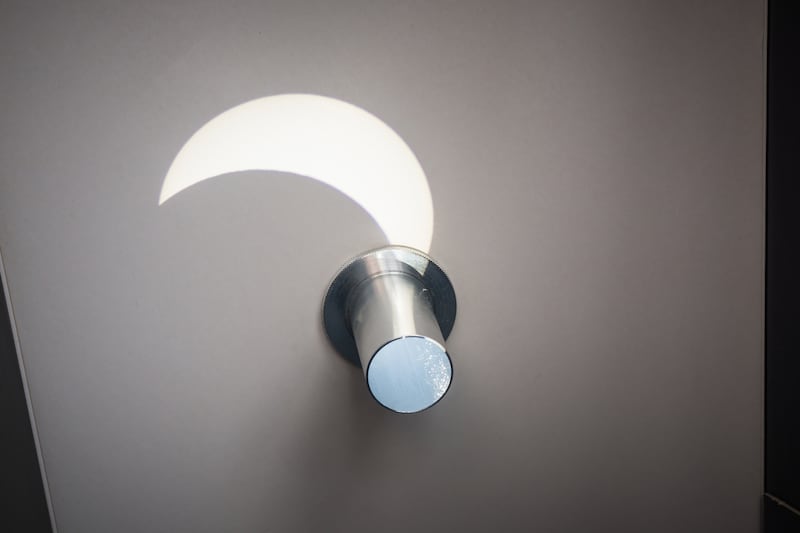
Cover a small flat mirror with paper that has a small hole cut in it. The hole does not have to be circular but should be no wider than 5mm (a larger hole will produce a fuzzier image).
Prop up or clamp the mirror so that it reflects the sunlight onto a pale screen or wall, ideally through a window. A projection distance of five metres (16.4 feet) will produce an image of the sun just over 5cm across.
You should be able to see the eclipse in the image as the moon starts to take a “bite” out of the sun, appearing upside down compared with its position in the sky.
3. Use a pinhole viewer
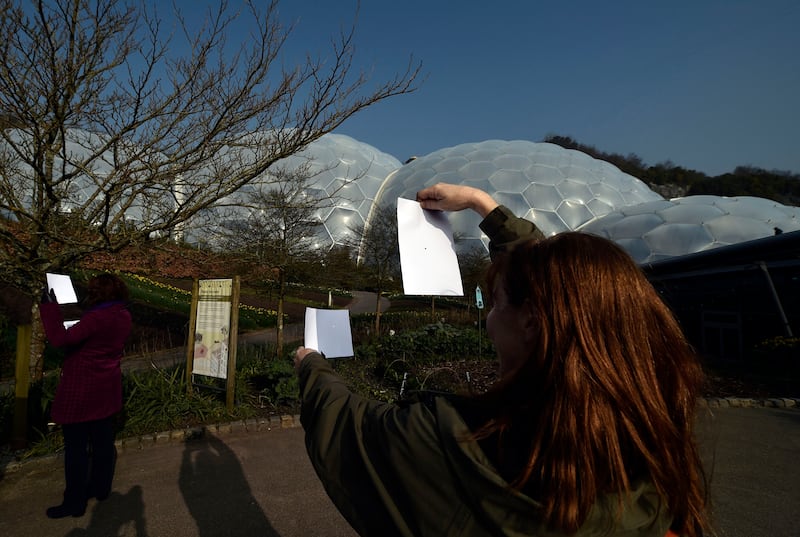
Pinholes allow light through them and can create an image like a lens.
Make a small hole in a piece of card using a compass or other sharp-pointed device. Standing with your back to the sun, position another white card behind the one with the pinhole so that the sun projects an image onto it.
An alternative method involves the use of a cereal box or something similar. Make a pinhole in one edge, point it towards the sun, and a tiny image will be seen projected onto the inside of the box. A piece of white paper or card placed inside will make it easier to see.
Never look through the pinhole at the sun.
4. Projection from binoculars or a telescope
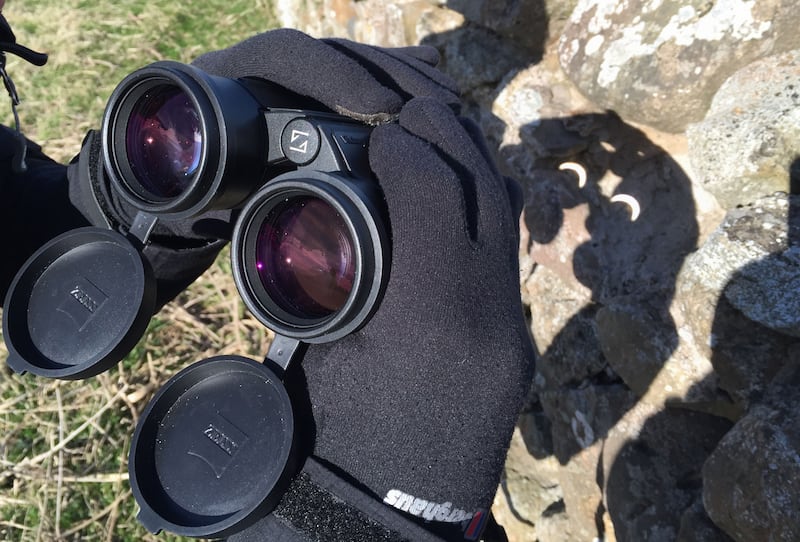
Cover one eyepiece of a pair of binoculars with a lens cap and face the “big” end of the binoculars towards the sun.
The uncovered lens will project an image of the sun that can be cast onto a plain card held about a foot away. Use the focus wheel to sharpen the image.
Ideally, the binoculars should be fastened to a tripod or stand. A cardboard “collar” with holes cut to fit the large lenses will shade the card on which the image is projected.
A small telescope can be used the same way.
5. Use a colander
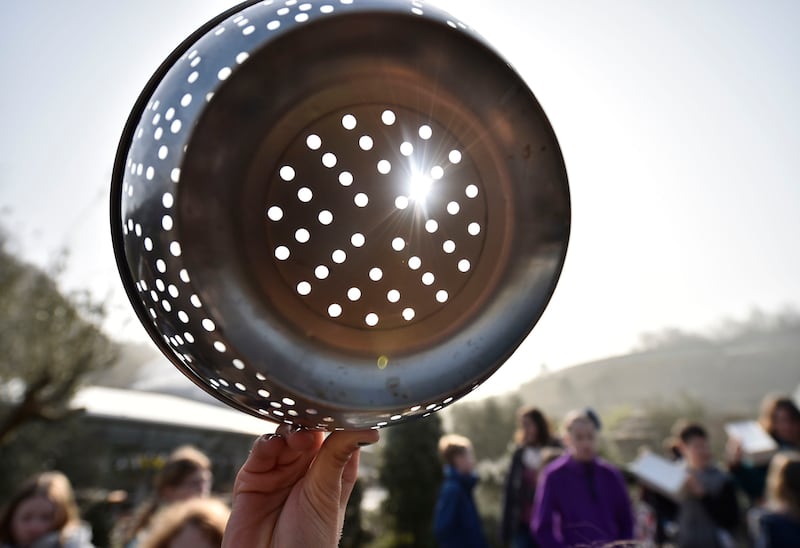
Take an ordinary kitchen colander and stand with your back to the sun holding it in one hand and a piece of paper in the other.
The holes in the colander can be used to project multiple eclipse images onto the paper.
What not to do
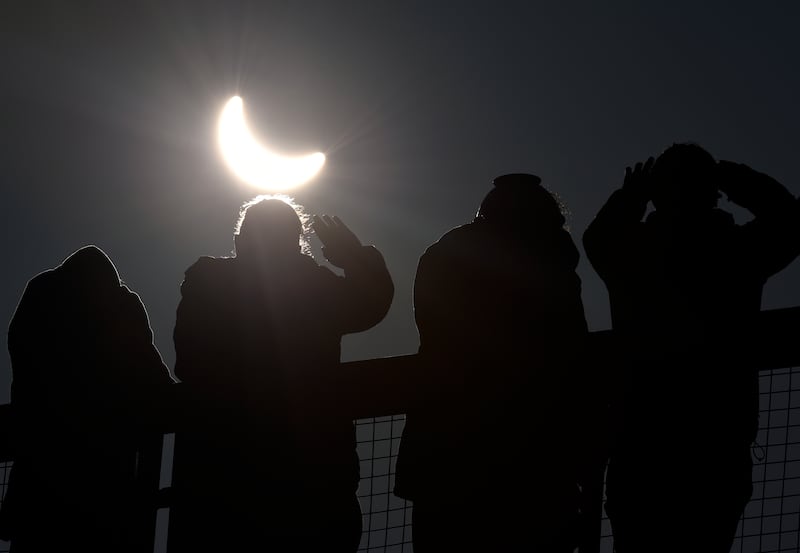
1. Never look directly at the sun.
2. Don’t look directly at the sun through sunglasses or dark material, such as a bin liner or photographic negative.
3. Don’t use makeshift filters as they may not screen out the harmful infrared radiation.
What will happen if you don’t put safety first
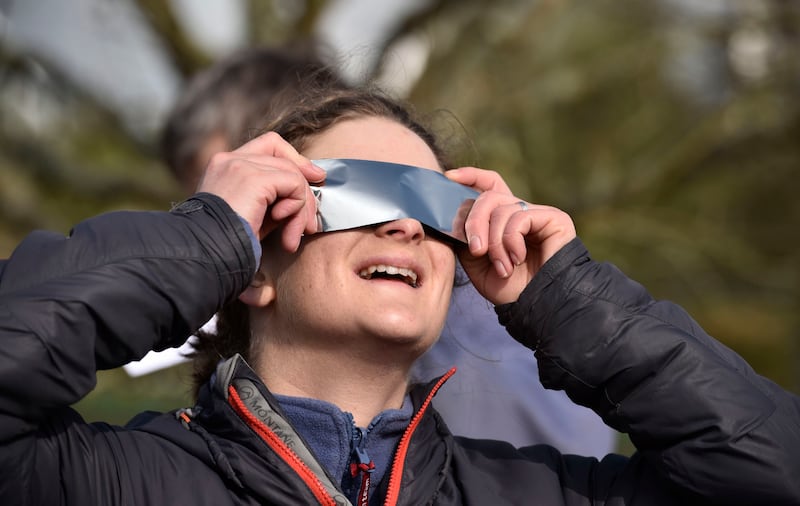
While warnings of complete blindness may be overstated, the light of an eclipse can damage your eyes. The condition is called solar retinopathy.
Solar retinopathy occurs when bright light from the sun floods the retina on the back of the eyeball.
When the light-sensing cells in the retina are over-stimulated by sunlight, they release chemicals that can damage the retina.
“UV radiation can cause ‘sunburn’ to the cornea or outer surface of the eye, just like sunburn to the skin – same mechanism, similar damage, but for the eye it results in pain and vision loss,” the Schepens Eye Research Institute says.








